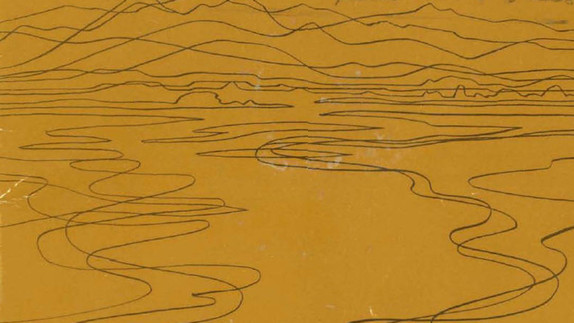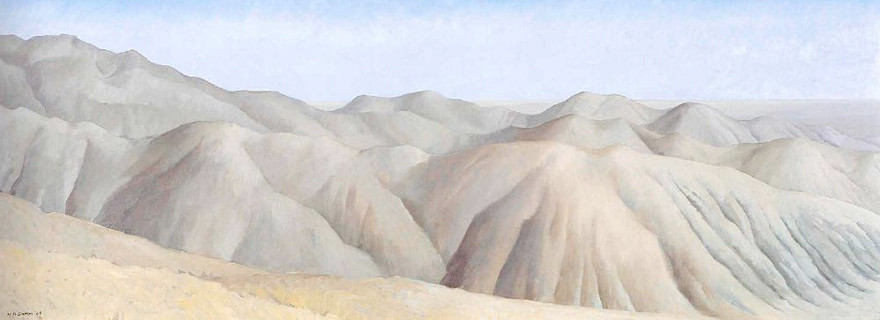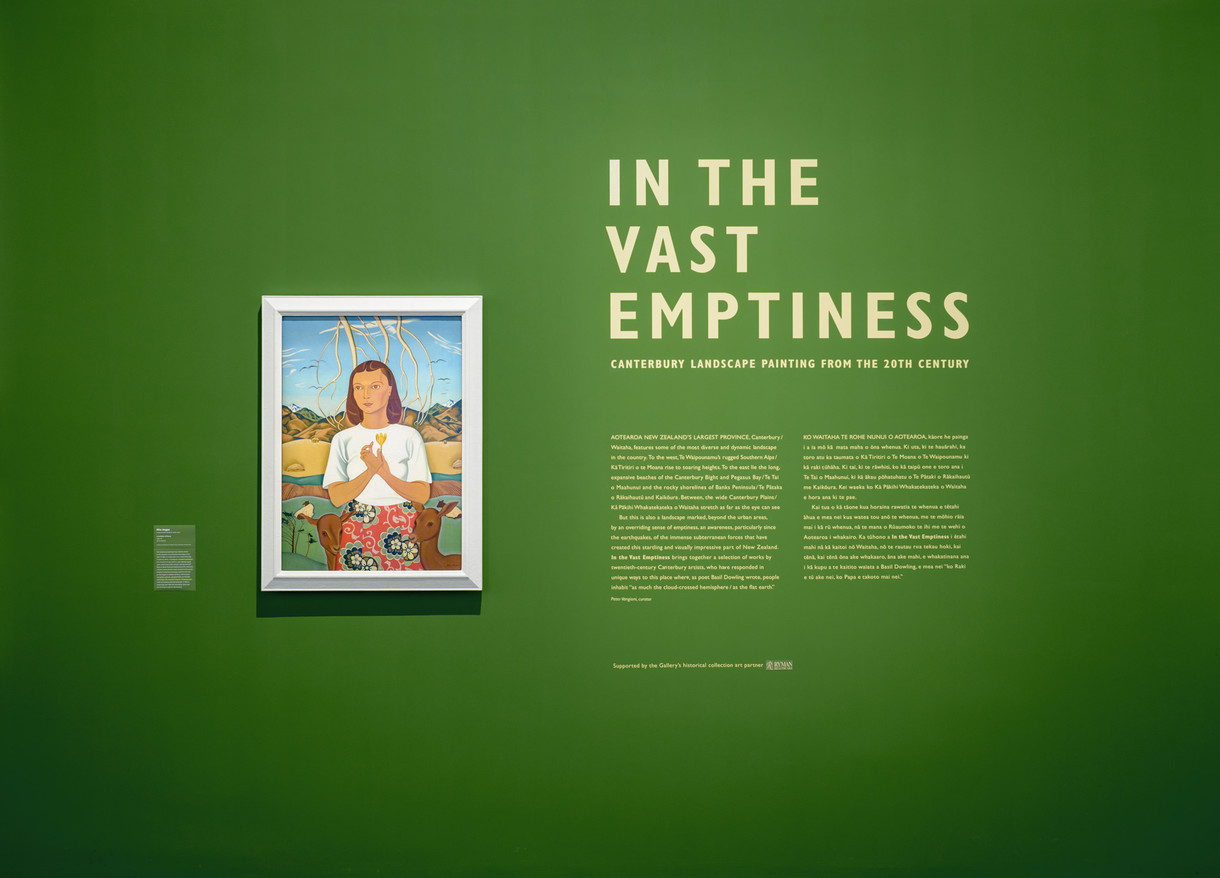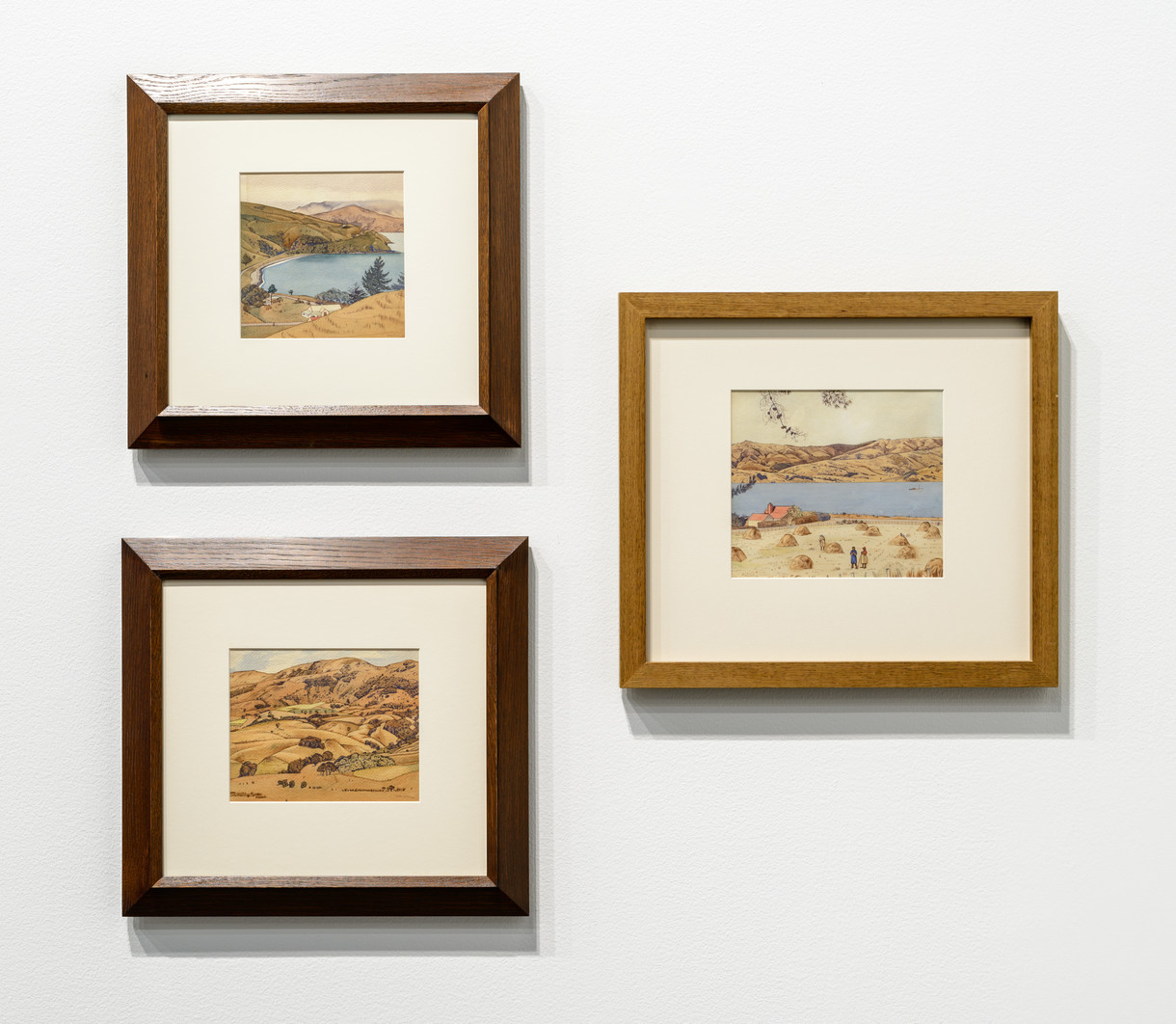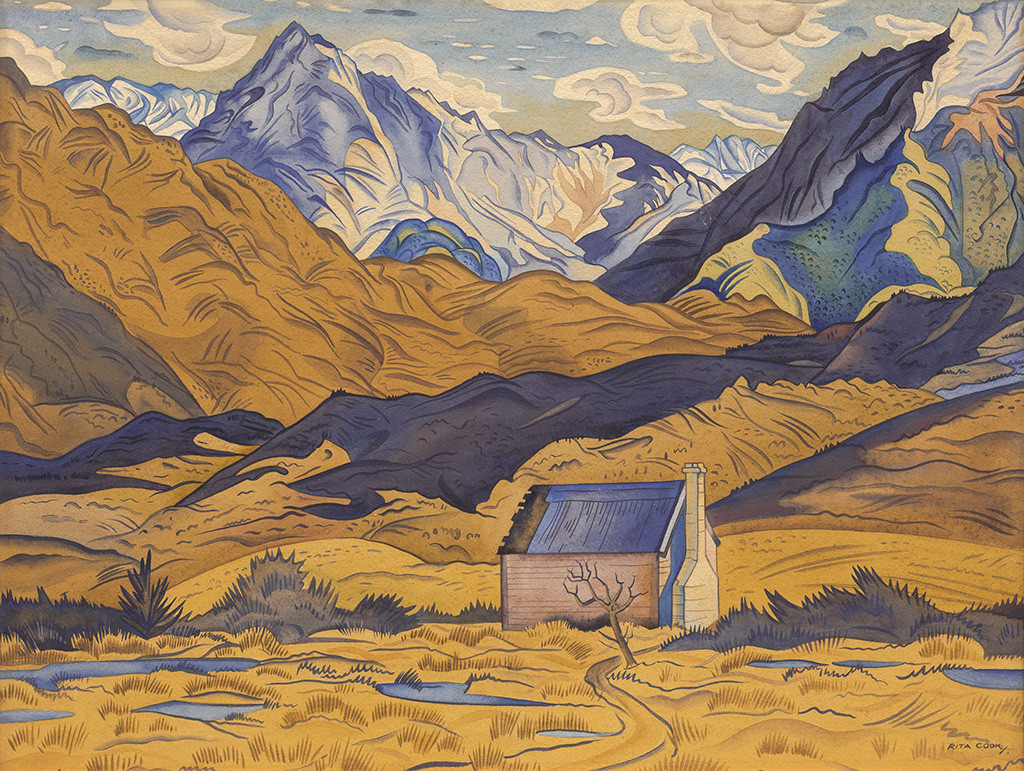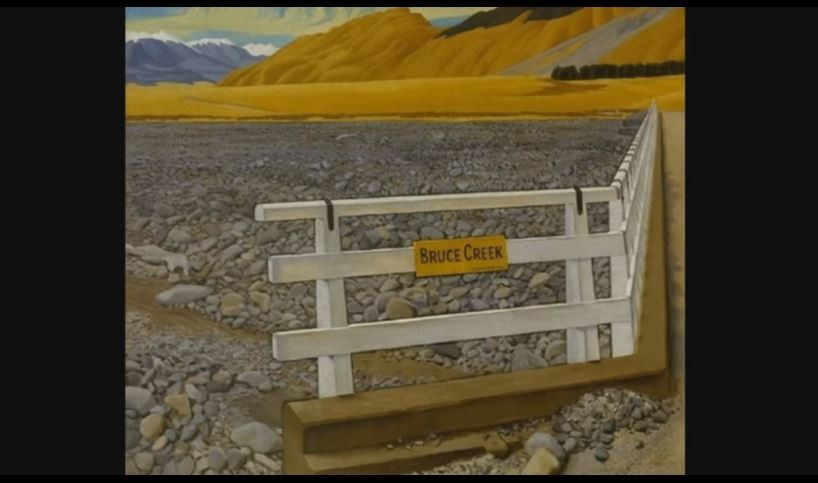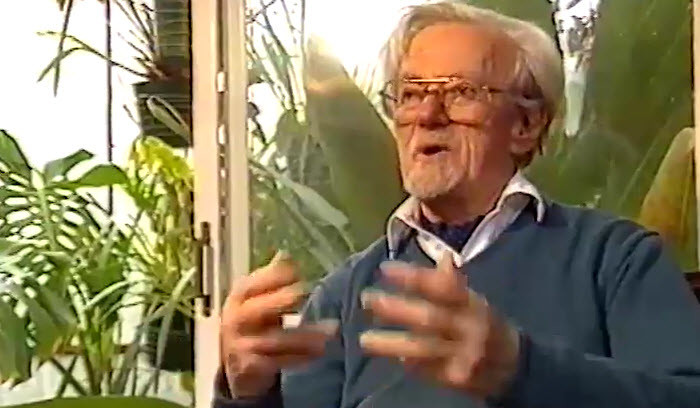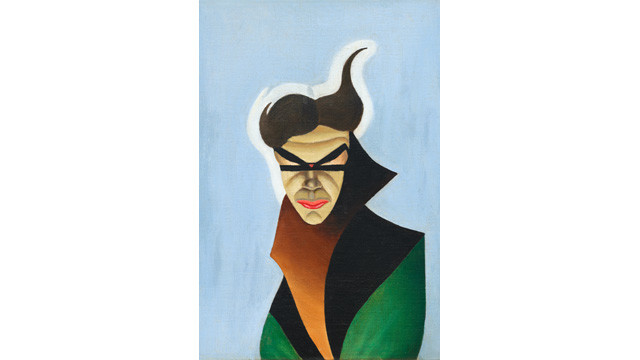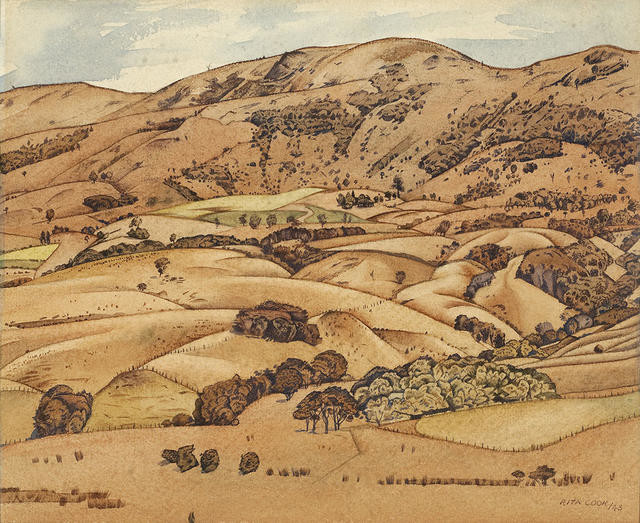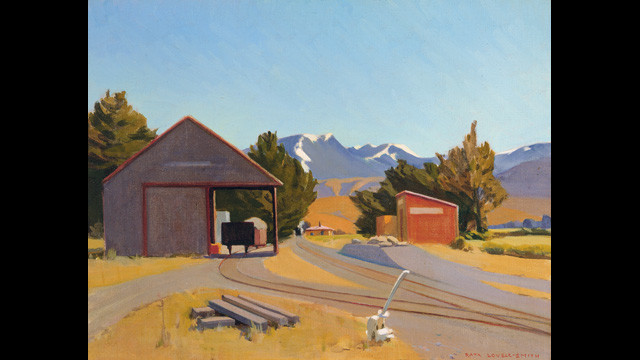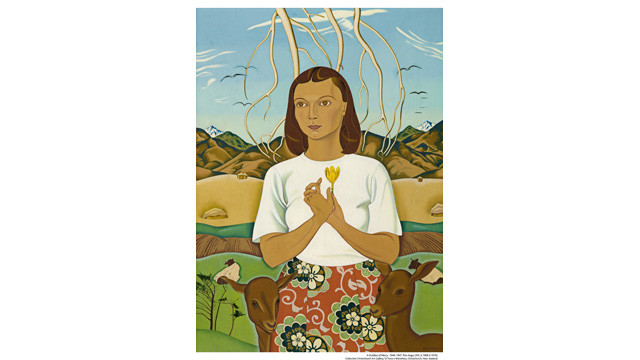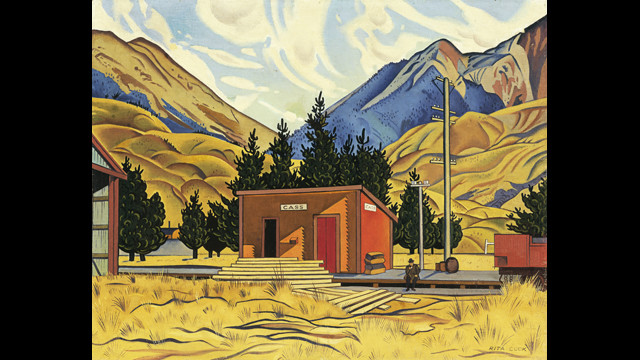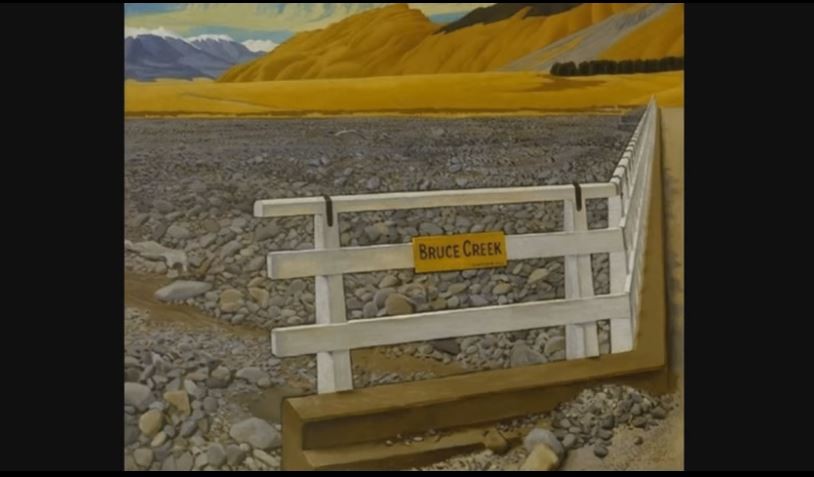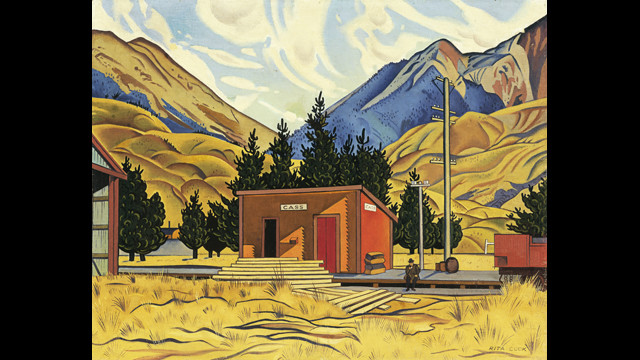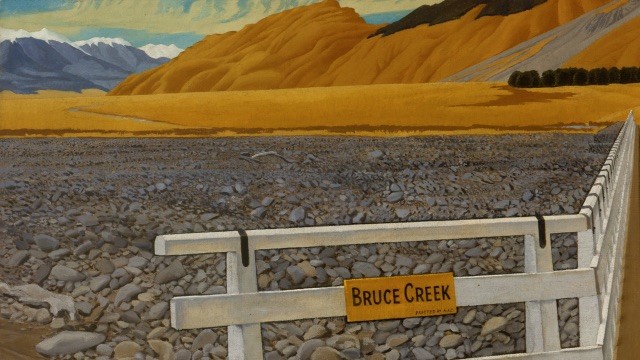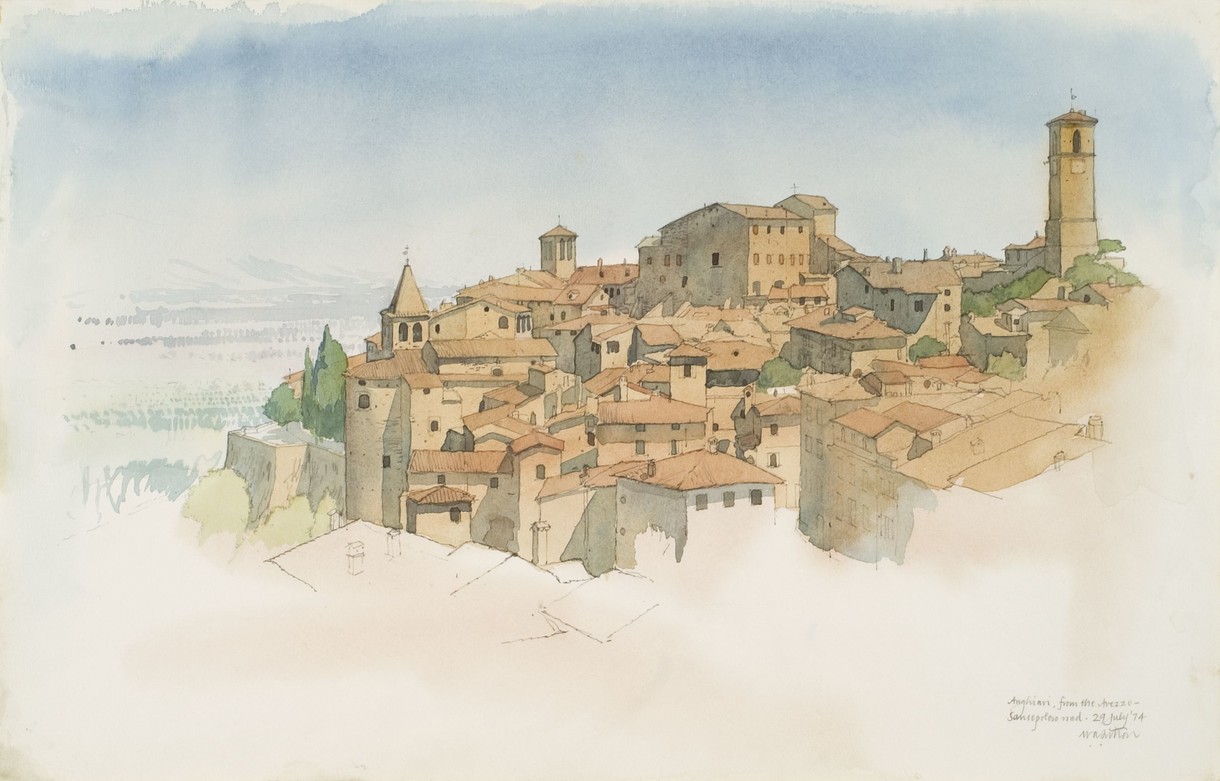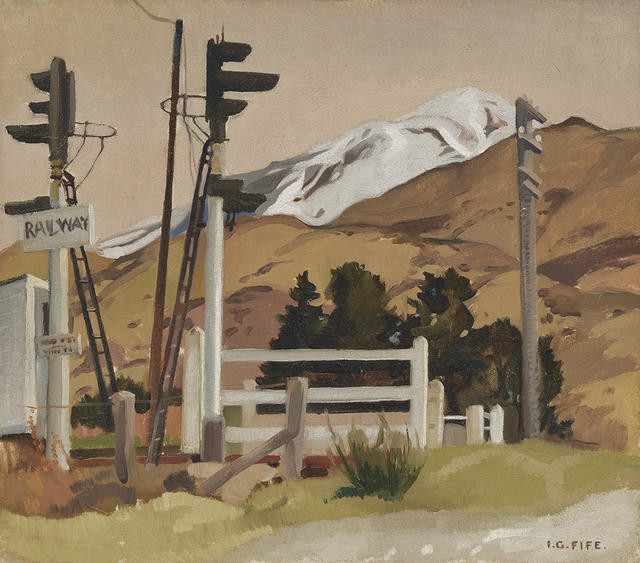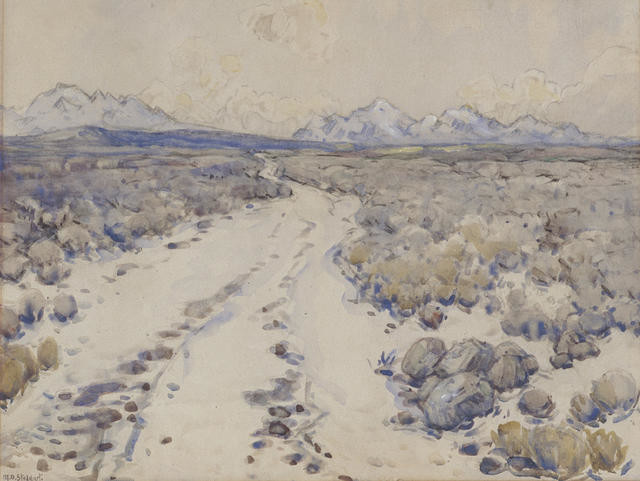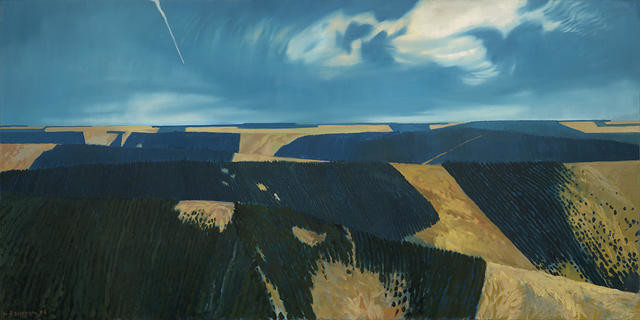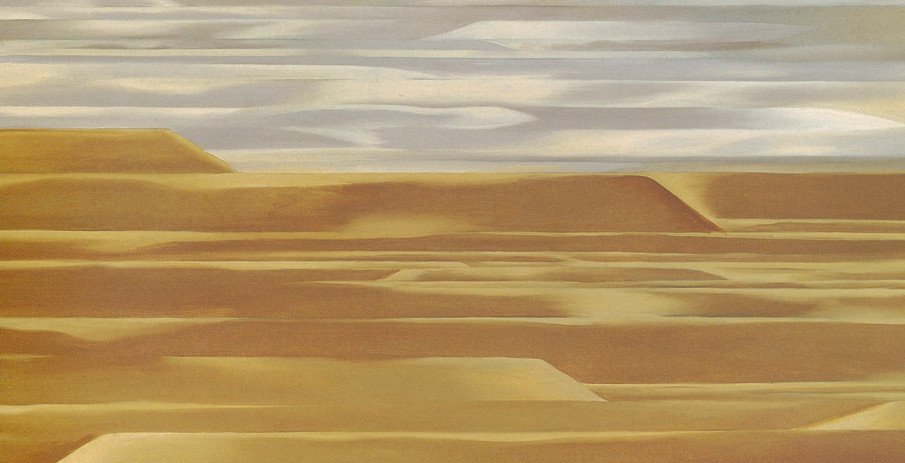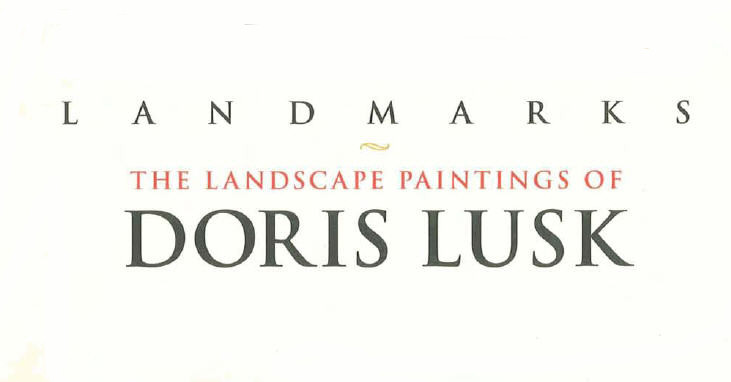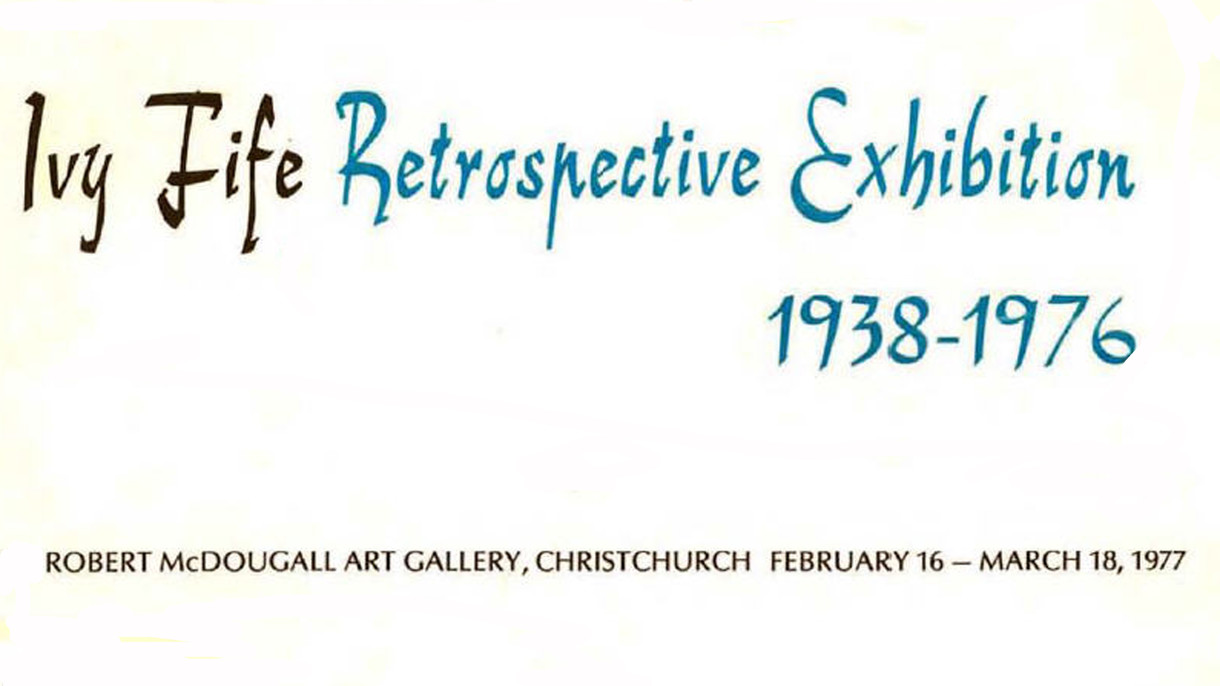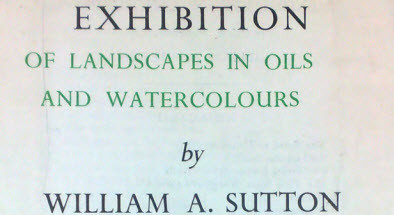Library and Archives
Digitised publications
W. A. Sutton: Retrospective Exhibition 1917-1971
Download PDFW. A. Sutton: Retrospective Exhibition 1917-1971
Exhibition: 5 March - 31 March 1973
Retrospective of the work of W. A. Sutton organised by The Dowse Art Gallery, Lower Hutt.
W C Ruifrok - Stairway into the sun
David Graham: A Retrospective Exhibition
Posters! Posters!
Related
Article
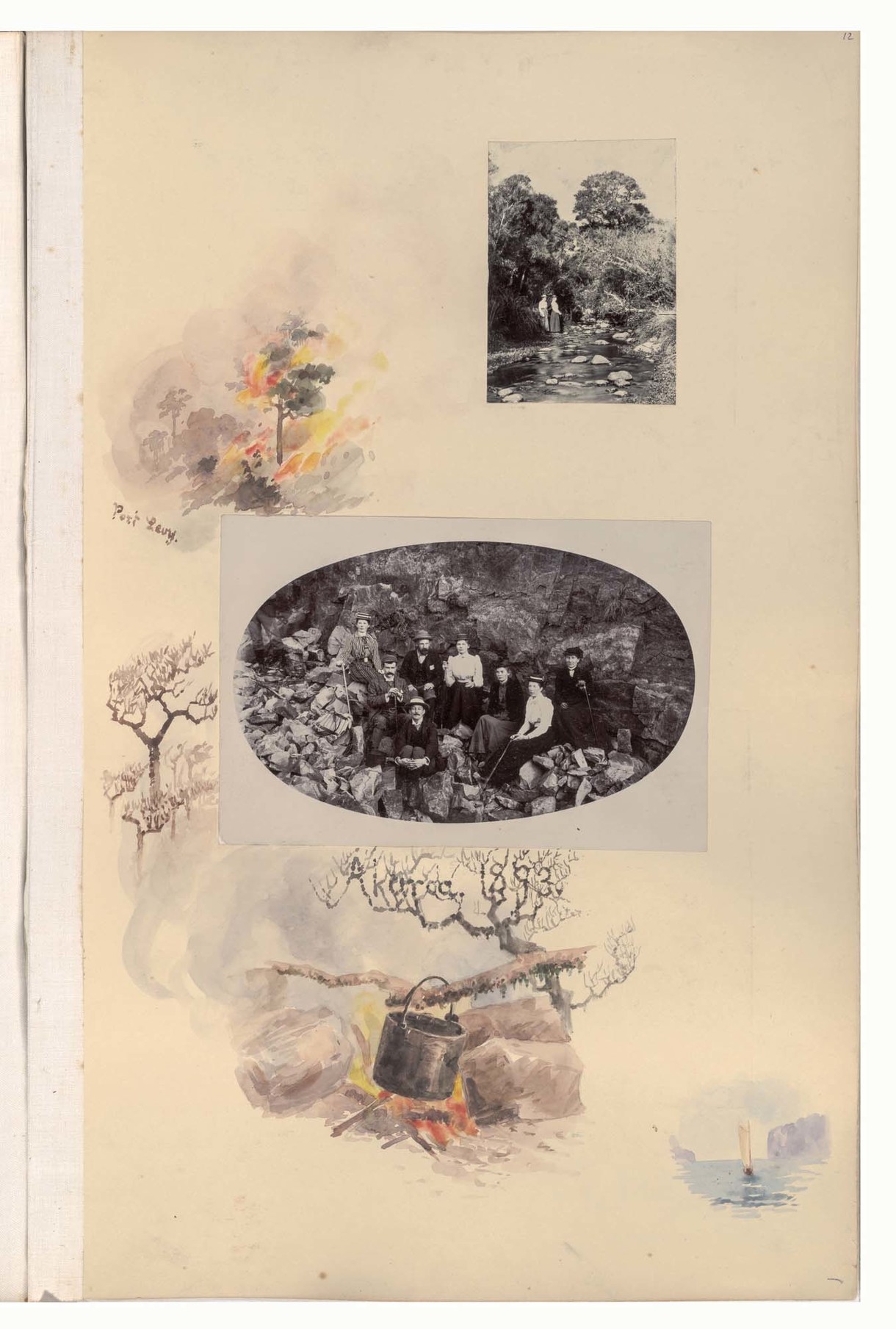
Exquisite Treasure Revealed
Canterbury Museum holds two albums compiled by Diamond Harbour artist Margaret Stoddart. The older of the two, containing images featured in this Bulletin, and itself currently exhibited in the Gallery, covers the period 1886–96. The album is handsomely bound in maroon, and stamped M.O.S. in gold. It contains a sort of travelogue by way of black and white photographs set amongst decorative painting, mostly of native flora, with some locality and date information.
Notes
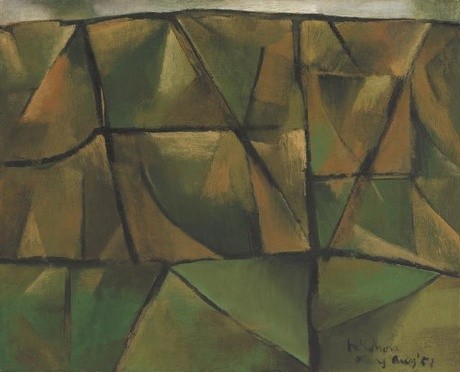
Canterbury Landscape by Colin McCahon
In 2014 we purchased an important landscape work by Colin McCahon. Curator Peter Vangioni speaks about this new addition to Christchurch Art Gallery’s collection.
Notes
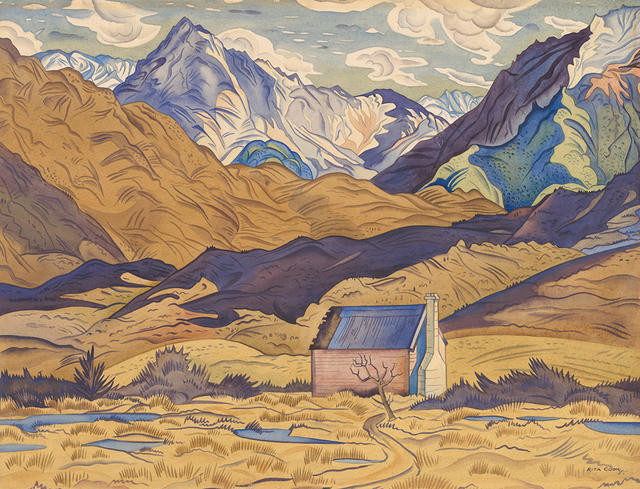
Mountains, Cass by Rita Angus
This article first appeared as 'The wonders of waterolours' in The Press on 11 August 2015.
Collection
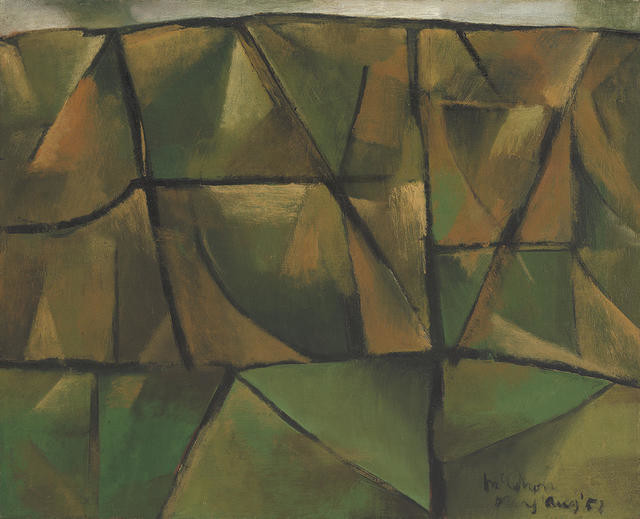
Colin McCahon Canterbury Landscape
'Pākihi is a word for a place that is bare or without trees. The Pākehā surveyors called these cleared areas parkee from the Māori word for no trees, pākihi. Kā Pākihi-Whakatekateka-A-Waitaha: the treeless place, the joyous strutting march through the treeless land of south Canterbury, Waitaha – that’s the old name for the Canterbury Plains.' —Sir Tipene O’Regan
(He Rau Maharataka Whenua: A Memory of Land, 17 September 2016 – 18 February 2017)
Notes
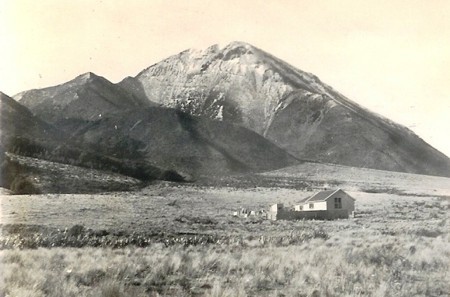
100 years of the Cass field station
Last weekend the University of Canterbury Biology Department celebrated the 100th anniversary of the field station at Cass with a symposium on Cass followed up with a field trip to the station.
Notes
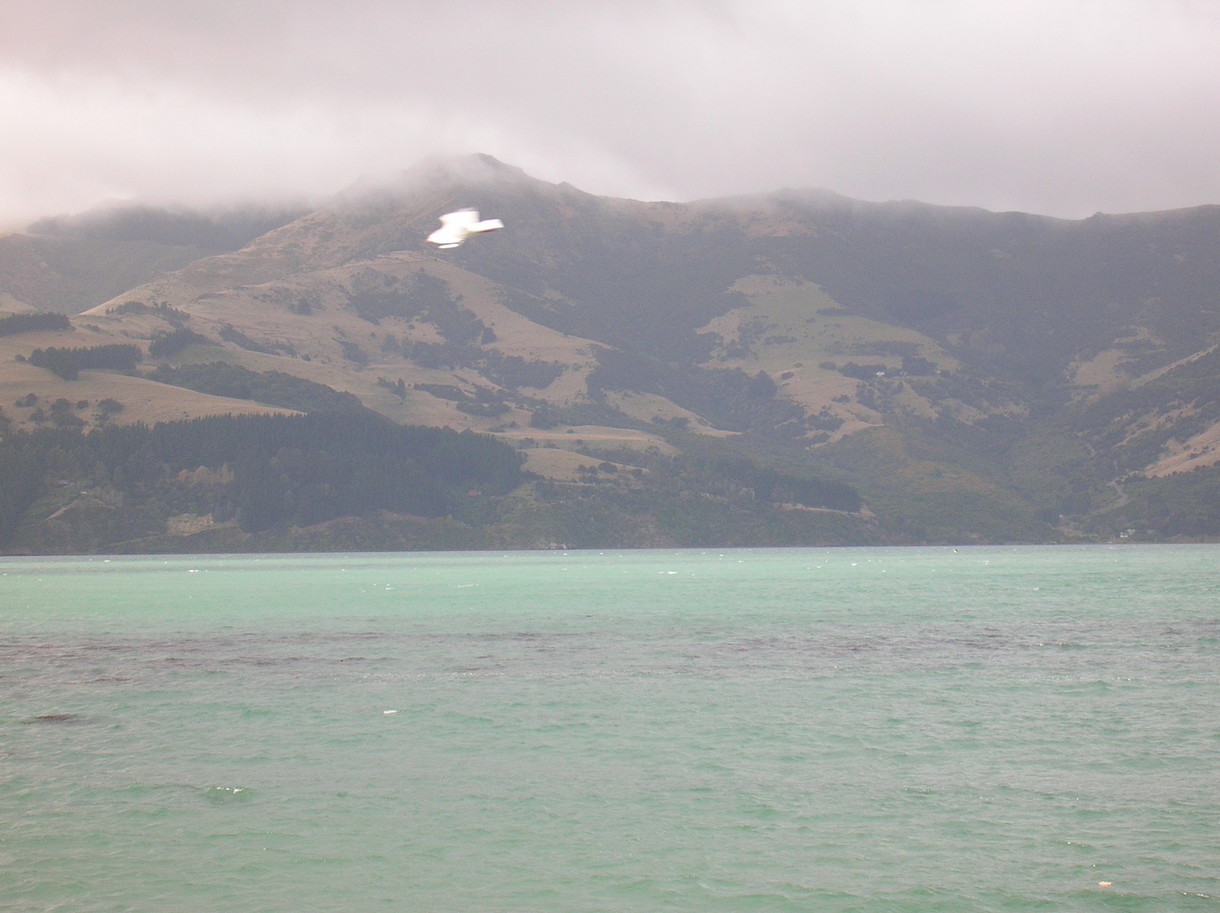
Wainui - to the west of the long harbour
"I like Wainui, quaint, charming, rather like a Pieter Bruegel subject with the haymaking in progress." Rita Angus to Douglas Lilburn, 1943
Collection
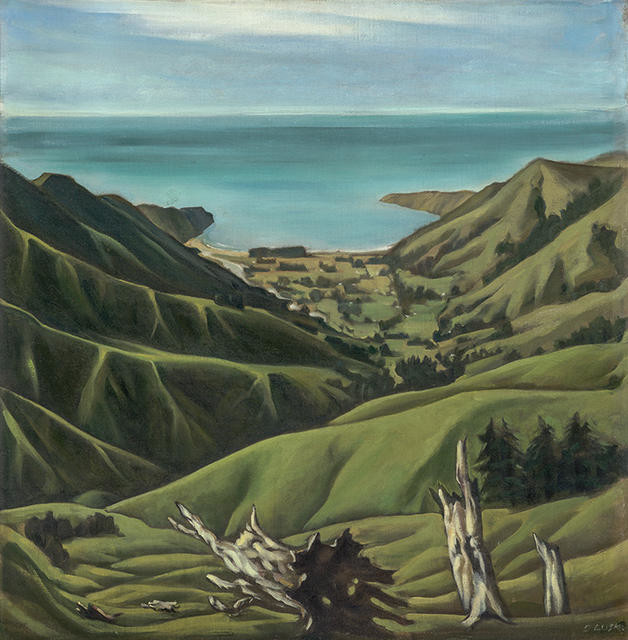
Doris Lusk Okains Bay, Banks Peninsula
'Now, the original name of Okains Bay is Kā Awatea. It’s an old settlement area, the old kāika [village] on the peninsula – and of course a place of mahika kai [food gathering], a zone receiving or exploiting the treasure left around the peninsula by Marokura who endowed the place with all things growing in the sea: fish, seaweeds, shellfish and so on.
'The region was all part of the work of Tu-Te-Raki-Whanoa, the atua [demi-god] who shaped the land, the engineer, the repairer of the wrecked waka [canoe] that came to be known as Te Waipounamu [the South Island]. When Tu-Te-Raki-Whanoa finished on the east coast, he went west to the Paparoa. There he created his first valley, Ka Māwheranui o Ka Kuha o Tu Te Rakiwhanoa, which means the river that runs to its sea, at Greymouth. His last big challenge was to become Fiordland. There he was assisted by Hine-Nui-Te-Pō – this was before she became the Mother who gathers in the dead. Tu-Te-Raki-Whanoa was the re-shaper, the salvager; Hine-Nui-Te-Pō was like an adorner, she worked with him as an assistant.
'When the Pākehā arrived, much of the peninsula was heavily forested with Podocarp. You can still see old fossilised tōtara stumps lying all around the tops of the hills. As I understand it, Christchurch was built off those forests.' —Sir Tipene O’Regan
(He Rau Maharataka Whenua: A Memory of Land, 17 September 2016 – 18 February 2017)
Collection
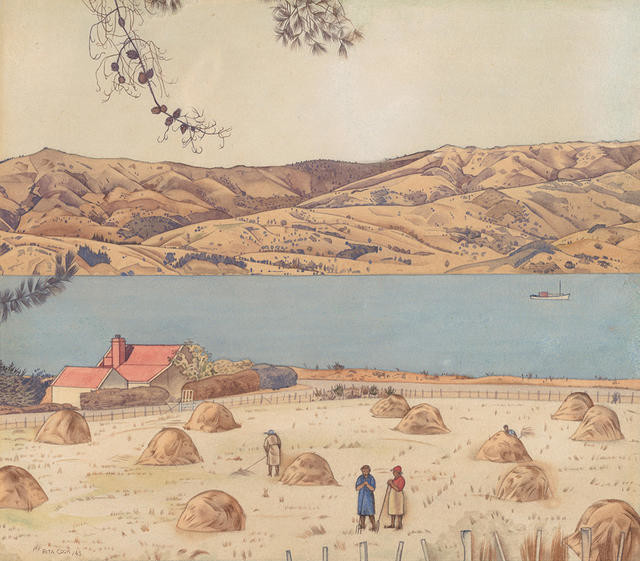
Rita Angus Haycocks, Wainui
'What makes Wainui significant, apart from its status as a mahika kai [food gathering area] for mussels and karengo [an edible seaweed], is that it sits beneath Tuhiraki [a mountain on Banks Peninsula, across the harbour from Akaroa]. It’s the beginning of the South Island’s traditional history. The metaphor is used that the atua [demi-god] Rākaihautū is striking his kō [digging stick] named Tuhiraki into the ground, creating, making, discovering the lakes. The furthest one south he creates is Lake Whakatipu Waitai, also known as Lake McKerrow, at the top end of Fiordland. Rākaihautū comes inland again and journeys up the eastern side of the island where he meets up with his son Rokohuia – I think around Waihao in south Canterbury at Wainono Lagoon, one of the historic hāpua [lagoons] of Kāi Tahu. Father and son are then joyously reunited to the settlement of Akaroa, which they developed. When they get there, Rākaihautū places his kō across the ridge of the hill above Wainui and changes the name to Tuhiraki – and it’s been a treasured name ever since. The French came and called it Mount Bossu, the hunchback; the hunch is the foot of the kō. The renaming has been attended to now.
'This is the base below Tuhiraki [also known as Mount Bossu]. It’s a mahika kai [food gathering area]. What’s important is the narrative in the hill. From Akaroa, you look across to Wainui, all the way along the peninsula and out over the heads. This is traditionally the centre of the evolution of Waitaha occupation [the Waitaha were an early people who occupied the South Island prior to the Kāti Māmoe and then Kāi Tahu people]. The march of Rākaihautū [the first ancestor of the Waitaha people] and his son Rokohuia gives the ancient name of Canterbury: Kā Pākihi-Whakatekateka-A-Waitaha, the strutting joyous march of Waitaha.' —Sir Tipene O’Regan
(He Rau Maharataka Whenua: A Memory of Land, 17 September 2016 – 18 February 2017)
Collection
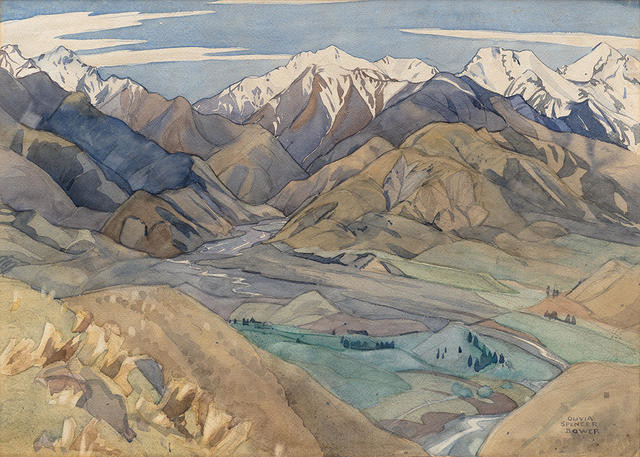
Olivia Spencer Bower Kaikoura Country
'The Māori name for Kaikōura is Te Ahi Kaikōura o Tama Ki Te Raki, the place where Tama Ki Te Raki [a mythical exploring ancestor] cooked his crayfish. What’s significant is the Kaikōura Ranges. The south Seaward Kaikōuras were named The Lookers On Mountains by Captain James Cook, so called because when Cook was coming down the coast some twelve miles offshore he encountered several double canoes out fishing. He kept trying to induce them to come alongside the ship, but every time the ship came towards them they paddled away and just sat watching – so he called the mountains behind them The Lookers On.
'Another interesting thing about the mountains of the Kaikōura territory: you’ve got Te Parinui o Whiti [the White Bluffs], one of Kāi Tahu’s marker boundaries, and the highest peak, Tapuae o Uenuku. Tapuae means footsteps, the sacred footsteps of Uenuku [a prominent Māori ancestor]. Uenuku is said to have been put ashore from the Uruao or Uruaokapuarangi canoe [said to have come from Hawaiki, led by Rākaihautū], and he climbed the mountain and named it Te Tapuae o Uenuku. The mountains behind have many different names; most of the Seaward Kaikōuras have Māori names. Behind them is the Awatere valley, inland; Tapuae o Uenuku is at the head of those valleys.' —Sir Tipene O’Regan
(He Rau Maharataka Whenua: A Memory of Land, 17 September 2016 – 18 February 2017)
Collection
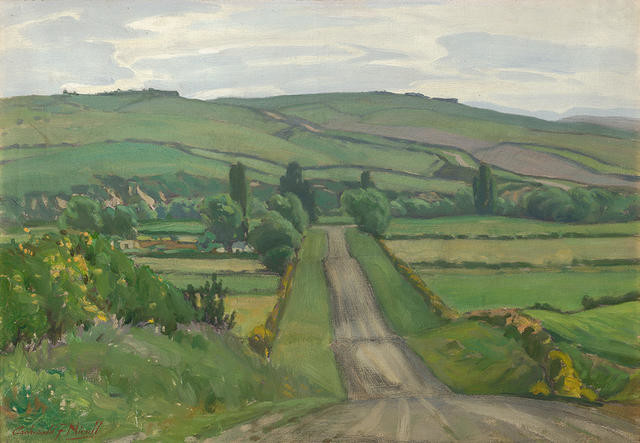
Archibald Nicoll A Canterbury landscape
Having lost his leg while fighting on the Somme during World War I, Archibald Nicoll was confined to painting landscapes in close proximity to where he was able to drive. This is why so many of his landscapes have roads as a central motif. Rather than a hindrance, however, Nicoll put his car to good use and revelled in the freedom it offered, driving all over Canterbury to paint. He would often combine painting excursions with family holidays. The scene in this work is thought to be Balcairn Downs inland from the town of Amberley in North Canterbury.
In the vast emptiness, 8 January - 21 August 2016
Notes
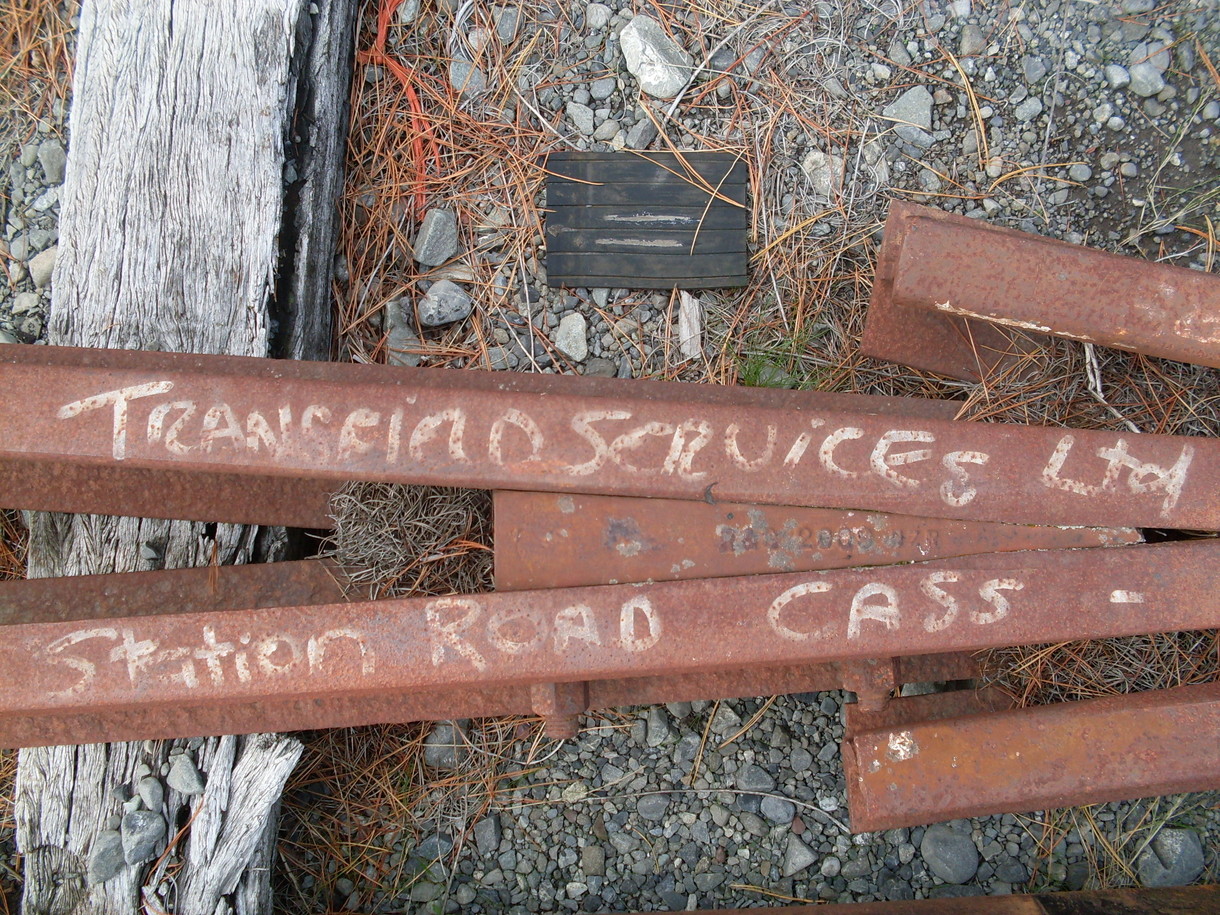
CASS
This week 77 years ago Rita Angus visited Cass on a sketching holiday with Louise Henderson and Julia Scarvell that resulted in several paintings including the Christchurch Art Gallery's Cass.
Notes
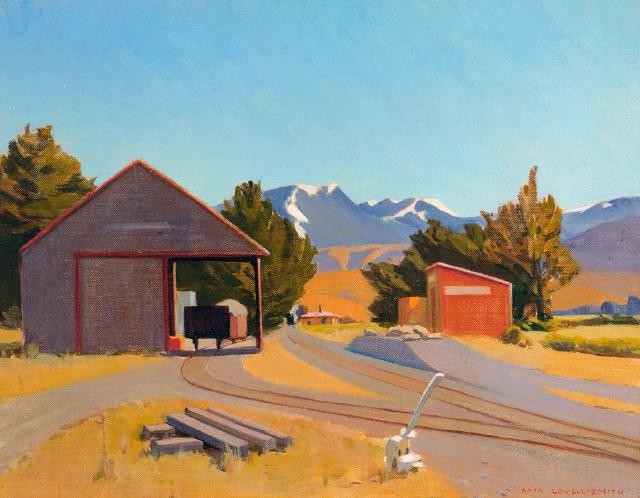
CASS
André Hemer's exhibition CASS is well worth a visit if you are near the Christchurch Art Gallery's space above NG on Madras street.
Notes
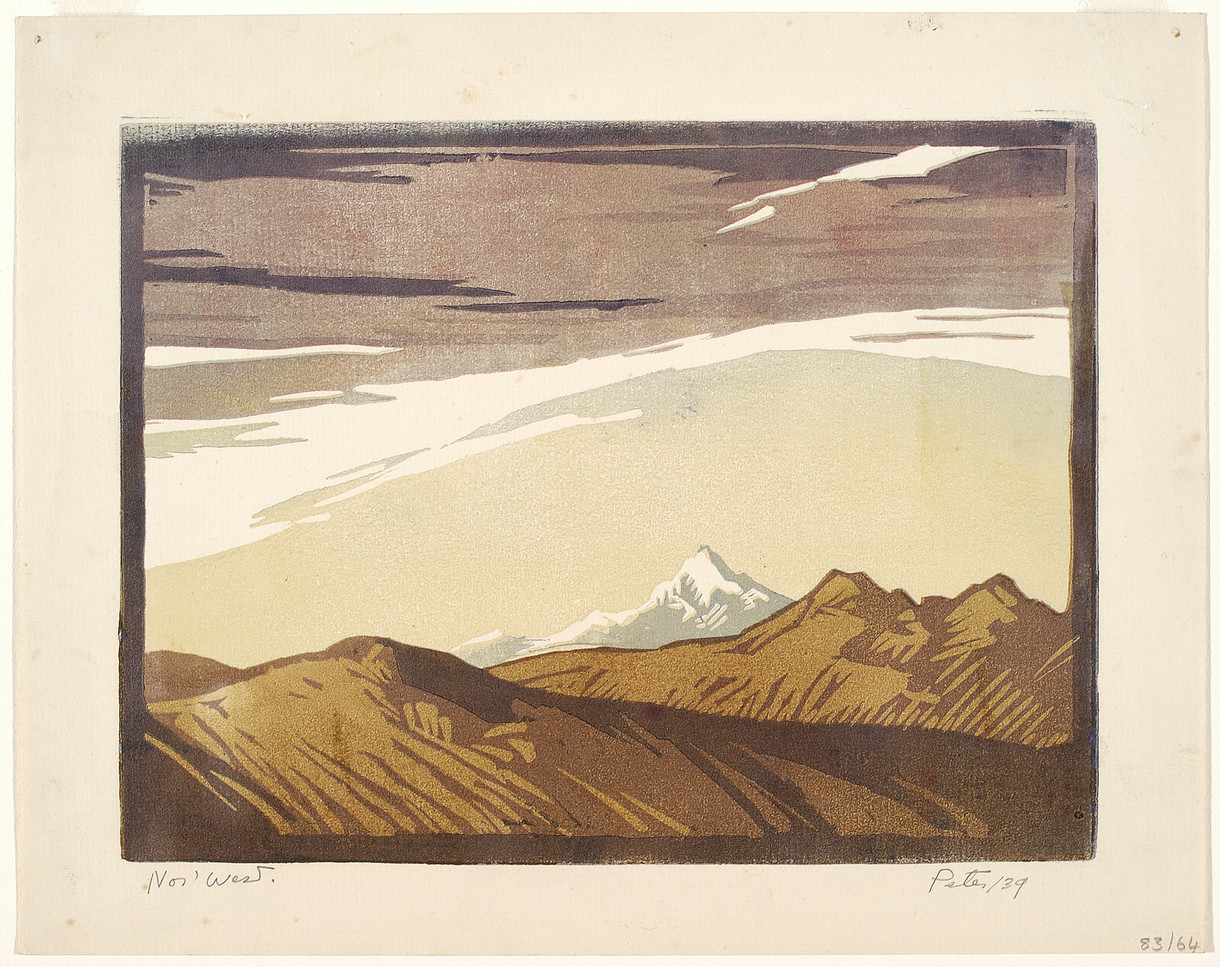
Another nor’wester descends on Canterbury
Some people fear them, others revel in the unforgiving dry heat – love them or hate them the legendary Canterbury nor'wester is one of the defining features of this region in the summer months and there is a real doozy blowing outside at the moment.
Notes
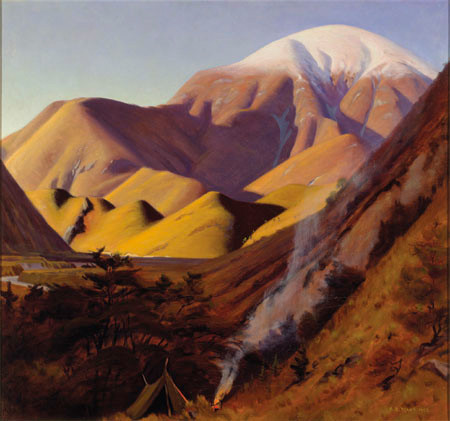
Heart in the high country: Austen Deans (1915 - 2011)
For Austen Deans, OBE, painting was an expression of his love of the outdoors and, in particular, the Canterbury high country.
Collection
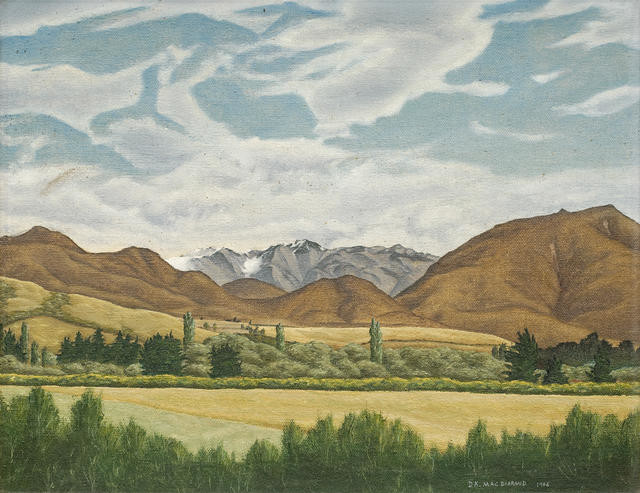
Douglas MacDiarmid Hills from Annat
After a stint at the Wigram Air Force Base in Christchurch with the Royal New Zealand Air Force during World War II, Douglas MacDiarmid found the need to get away to the country for a well-earned sketching holiday. It was here that Hills from Annat was completed. He said of this time:
'I had been able to lay my hands on the last covered wagon in the South Island, also to hire a fine white mare. Off we drove in a flourish then for a month, Blanche, Buddy, me. We were headed for the rolling country where the Canterbury Plains are not yet hills finishing as Alps. At no more than a clip-clop pace it is possible to approach with peaceful observation, meditation merging as no motor vehicle will allow.'
In the vast emptiness, 8 January - 21 August 2016
Notes
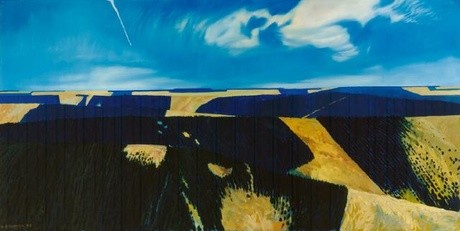
Sutton high-fives McCahon
Nothing made it into a W.A. Sutton painting by accident, and the white line that rises diagonally through the sky in Plantation Series II is no exception.
Collection
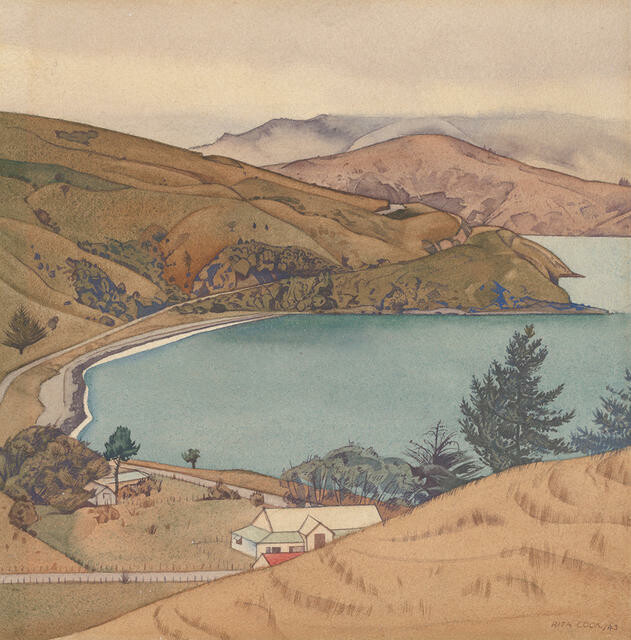
Rita Angus Wainui, Akaroa
'What makes Wainui significant, apart from its status as a mahika kai [food gathering area] for mussels and karengo [an edible seaweed], is that it sits beneath Tuhiraki [a mountain on Banks Peninsula, across the harbour from Akaroa]. It’s the beginning of the South Island’s traditional history. The metaphor is used that the atua [demi-god] Rākaihautū is striking his kō [digging stick] named Tuhiraki into the ground, creating, making, discovering the lakes. The furthest one south he creates is Lake Whakatipu Waitai, also known as Lake McKerrow, at the top end of Fiordland. Rākaihautū comes inland again and journeys up the eastern side of the island where he meets up with his son Rokohuia – I think around Waihao in south Canterbury at Wainono Lagoon, one of the historic hāpua [lagoons] of Kāi Tahu. Father and son are then joyously reunited to the settlement of Akaroa, which they developed. When they get there, Rākaihautū places his kō across the ridge of the hill above Wainui and changes the name to Tuhiraki – and it’s been a treasured name ever since. The French came and called it Mount Bossu, the hunchback; the hunch is the foot of the kō. The renaming has been attended to now.
'This is the base below Tuhiraki [also known as Mount Bossu]. It’s a mahika kai [food gathering area]. What’s important is the narrative in the hill. From Akaroa, you look across to Wainui, all the way along the peninsula and out over the heads. This is traditionally the centre of the evolution of Waitaha occupation [the Waitaha were an early people who occupied the South Island prior to the Kāti Māmoe and then Kāi Tahu people]. The march of Rākaihautū [the first ancestor of the Waitaha people] and his son Rokohuia gives the ancient name of Canterbury: Kā Pākihi-Whakatekateka-A-Waitaha, the strutting joyous march of Waitaha.' —Sir Tipene O’Regan
(He Rau Maharataka Whenua: A Memory of Land, 17 September 2016 – 18 February 2017)
Interview
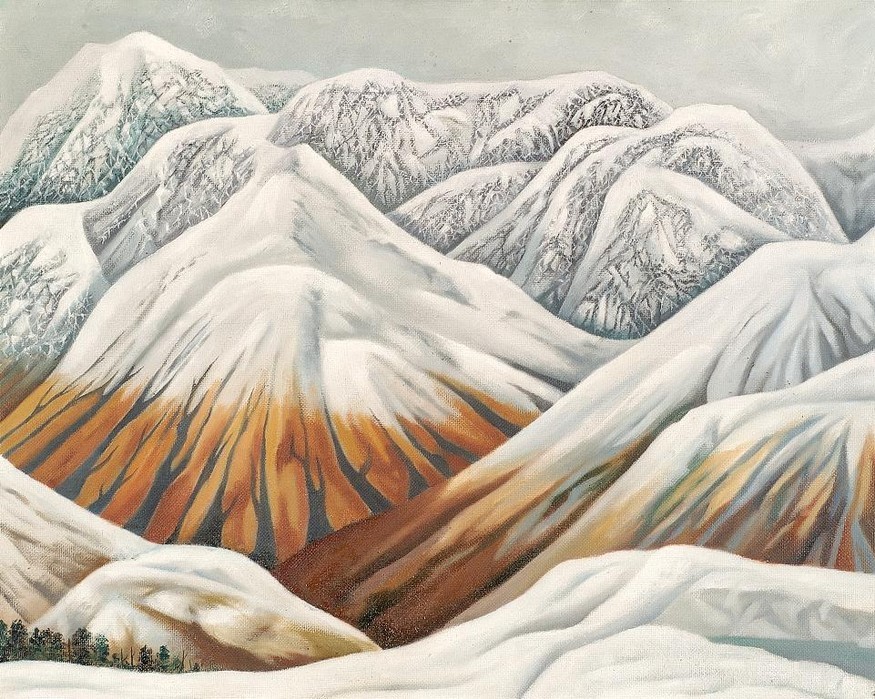
Talking Bensemann
Leo Bensemann was one of the most respected figures in the Christchurch arts scene, and played a pivotal role in influential arts collective The Group. Always something of an odd-man-out, he produced a large body of work across several different disciplines before his death in 1986. In an attempt to get a fuller picture of the man himself, Gallery director Jenny Harper spoke to two artists who knew him well, John Coley and Quentin MacFarlane.
Artist Profile
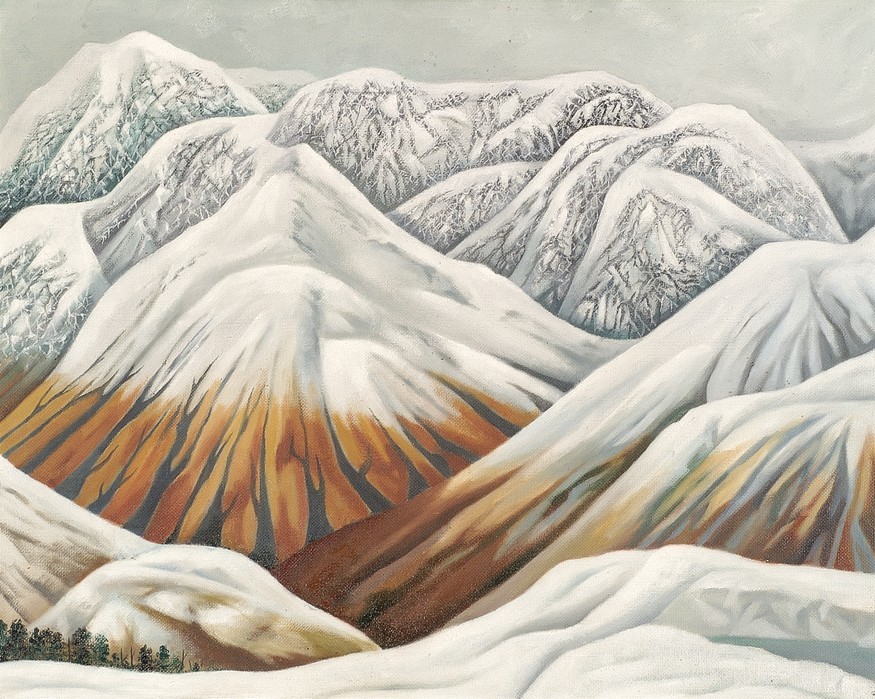
Leo Bensemann: an art venture
Leo Bensemann (1912–1986) was a pivotal figure bridging the worlds of literature and visual arts – a go-between like no other. Peter Simpson is an authority on this distinctive artist.
Collection
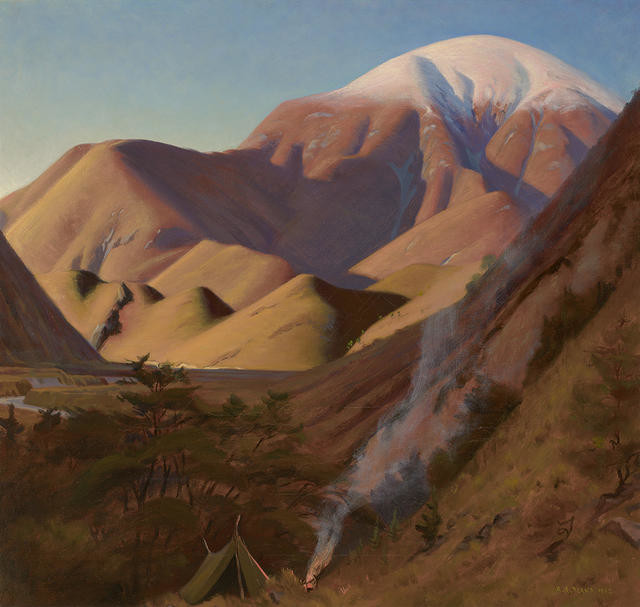
Austen A Deans Camp in the Kowai
For Austen Deans, painting was an expression of his love of the outdoors and, in particular, the Canterbury high country. Born at Riccarton House, Christchurch in 1915, he grew up on the family farm near Sheffield in North Canterbury (and near Kowai, the subject of this 1952 painting). He trained at the Canterbury College School of Art between 1934 and 1938, where he continued his interest in the outdoors through membership of the College tramping club. He once said that he had 'rather wished to be a mountain guide', but his mother dissuaded him from that early ambition. Though he loved sculpture, he specialised in painting because it allowed him to work outdoors rather than being tied to a city studio. Deans was the last of a generation of painters, which also included Doris Lusk and Bill Sutton, whose work was strongly focused on the Canterbury landscape. He is most well-known for his paintings of Mt Peel and the surrounding area, where he lived and worked for over 60 years. 'It was really my attraction to the mountains that started me painting' he said, 'and it's never left me'.
(Turn, Turn, Turn: A Year in Art, 27 July 2019 – 8 March 2020)
Collection
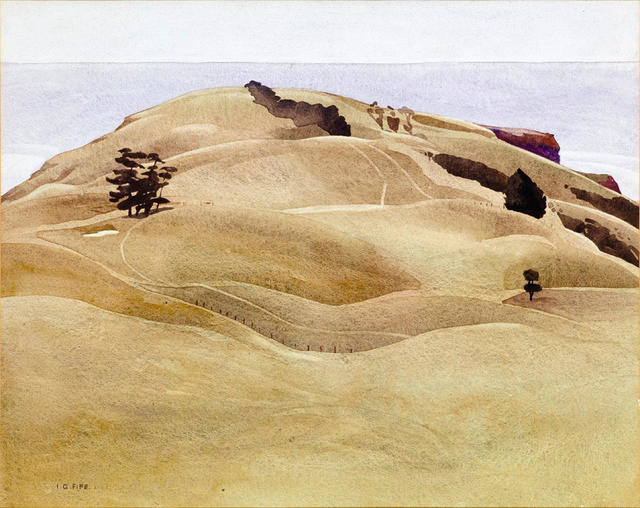
Ivy Fife The Long Lookout
'Tu-Te-Raki-Whanoa, the son of Aoraki, is the atua [demi-god] who shapes the wrecked waka to ready it for people. His first great task is to defeat the south-easterly winds roaring along the side of the wreck. He invents peninsulas. He rakes all the rubbish of the wreckage and piles it up like a gigantic break water. Thus you have the Canterbury Plains and a sheltered place for his next invention, Whakaraupō [Lyttelton Harbour] and Akaroa Harbour. He then depresses his heel and creates Waihora [Lake Ellesmere], later claimed by the exploring ancestor, Rākaihautū, as Te Kete ika o Te Rākaihautū [the fish basket of Rākaihautū].' —Sir Tipene O’Regan
(He Rau Maharataka Whenua: A Memory of Land, 17 September 2016 – 18 February 2017)
Collection
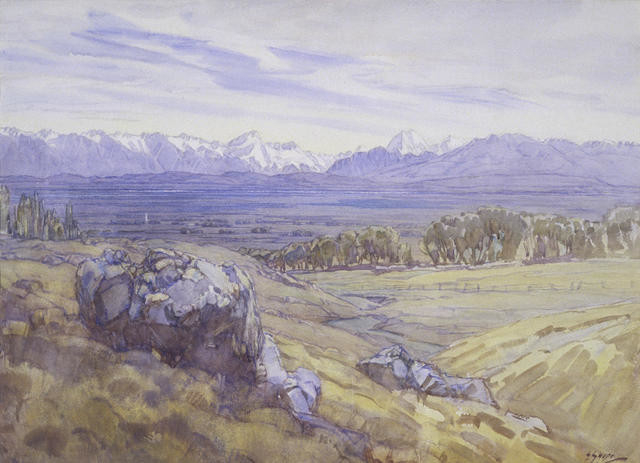
Esther Studholme Hope Mackenzie Country
The viewpoint Esther Hope chose for this work allowed her to show the vast expanse of the Mackenzie Country, which stretches out before the viewer towards the Southern Alps. This region was a favourite subject of Hope’s, one that she returned to throughout her career.
She said that “this land is a part of me … I have never regretted my choice of environment [and] have always felt a strong feeling of primitiveness [here].” Hope’s mature style is seen here, with broad wet washes of colour confidently used.
Hope was born near Geraldine, South Canterbury. She was first introduced to painting through her mother, Emily Studholme, an accomplished amateur artist. She also took lessons from Edwyn Temple and Margaret Stoddart. In 1912 Hope left New Zealand for England where she enrolled at the Slade School of Art, London. In 1919 she returned to New Zealand, married Henry Norman Hope and settled at the Grampians Station in the Mackenzie Country.
Collection
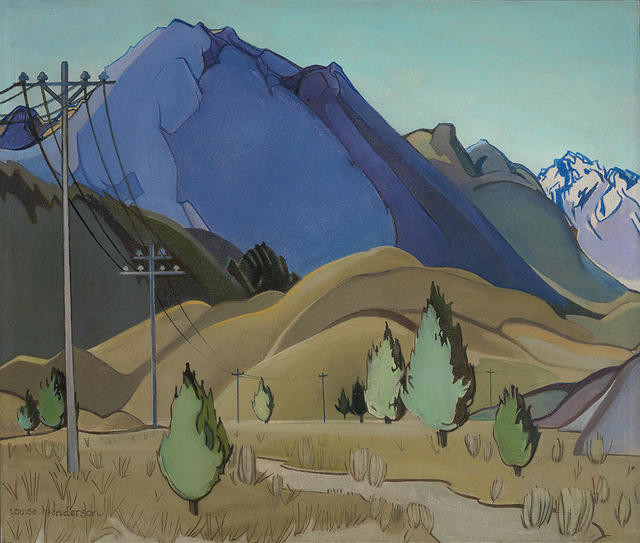
Louise Henderson Plain and Hills
French-born Louise Henderson married a New Zealander and came to Ōtautahi Christchurch in 1925. She relished the freedom of her new life, exploring in and painting the hill country of Te Waipounamu and often sleeping out alone under the stars. In 1936, she undertook a ten-day painting trip to Cass, in the Southern Alps, with her friends Rita Angus and Julia Scarvell. Her translation of that landscape is alive with luminous colour and dynamic movement, capturing jagged ridgelines, undulating hills and the curving lines of telegraph wires. The mountain, its slopes depicted blue with shadow, is called the Pyramid – much easier to look at than to climb.
(Perilous: Unheard Stories from the Collection, 6 August 2022- )
Collection

Cedric Savage Summer, Kowai
Kowai Bush is a farming area in the foothills of Central Canterbury, where typically the summers are very hot and dry. Like other Canterbury landscape artists of the 1930s, Cedric Savage was interested in recording the unique features of the Canterbury region. He was essentially a plein air (outdoors) artist concerned with painting directly from nature but in Summer, Kowai he has worked in a careful manner, keeping control over the application of paint. Born in Christchurch, Savage studied at the Canterbury College School of Art. He later studied with Sydney Lough Thompson (1877-1973) and Archibald Nicoll (1886 - 1953). After travelling, he returned to New Zealand in 1933, settling in Christchurch where he became vice-president of the New Zealand Society of Artists. Savage’s eyes were injured during World War II and for the rest of his life he could only paint outdoors. Although he won the Kelliher Art Award in 1962, Savage felt unappreciated in New Zealand and spent many years living away from the country, finally settling in Greece.
Collection
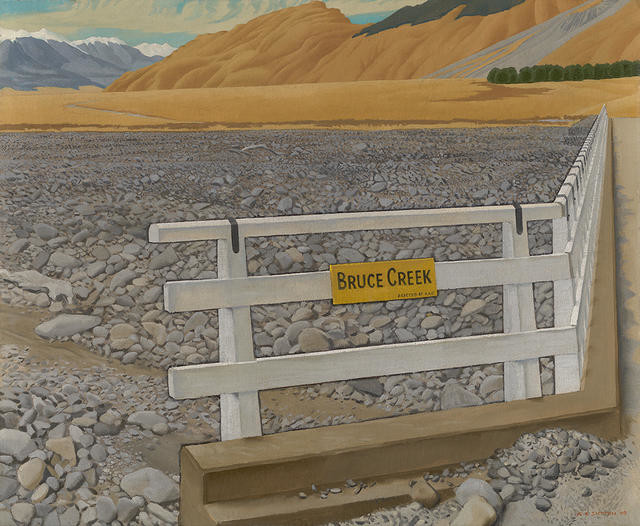
Bill Sutton Dry September
In 1930s New Zealand there was wide discussion about what was unique about the New Zealand situation; what it was that made us different from the rest of the world. Artists and writers began exploring ways to identify our national identity. A number of artists began painting the Canterbury High Country, most famously Rita Angus and her landscape painting of the railway station at Cass. One reviewer in 1936 observed that there was a new quality in the landscapes exhibited in Christchurch that seemed ‘to consist in a removal of the romantic mists which used to obscure mountains and the Canterbury countryside generally. The light now is clear and hard, the colours are in flat planes, and the effect is of seeing the country through a gem-like atmosphere. There is also a new romantic standpoint – an insistence on the isolation and brooding loneliness of the hills.’ It’s a statement that certainly rings true with the Canterbury paintings of Rita Angus, Leo Bensemann, Louise Henderson, Rata Lovell-Smith and Bill Sutton.
(March 2018)
Collection
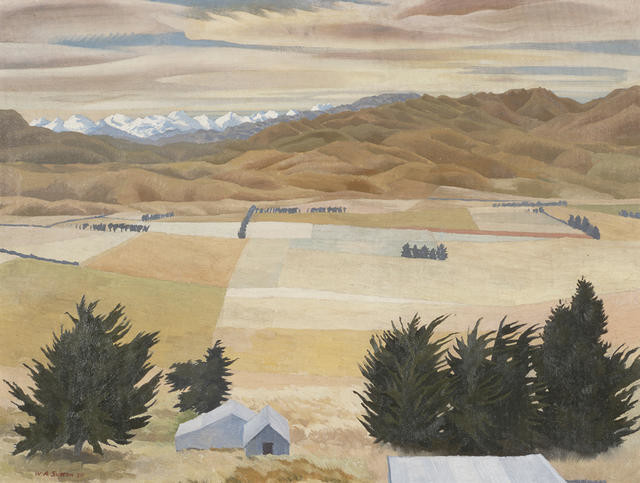
Bill Sutton Hills and Plains, Waikari
William (Bill) Sutton spent most of his life in Christchurch, apart from two years from 1947–49 studying and painting in Britain and Europe. This time away helped attune his eyes to the distinctive qualities of the local regional landscape. Teaching full-time at the Canterbury College School of Art from that time, Sutton lived in a rented studio flat overlooking Victoria Square and became the owner of a Matchless motorbike – upgraded to a 500cc BSA Golden Flash in 1956 – on which he’d leave the city on his weekends in pursuit of countryside to paint.
Human presence has reshaped this landscape, with its bending macrocarpa windbreaks, simple corrugated iron structures and undulating patchwork fields. A palette of subtle ochres, greys and gold presents a characteristically Canterbury scene and typifies the work for which Sutton became appreciated and known.
(Beneath the ranges 18 February – 23 October 2017)
Collection
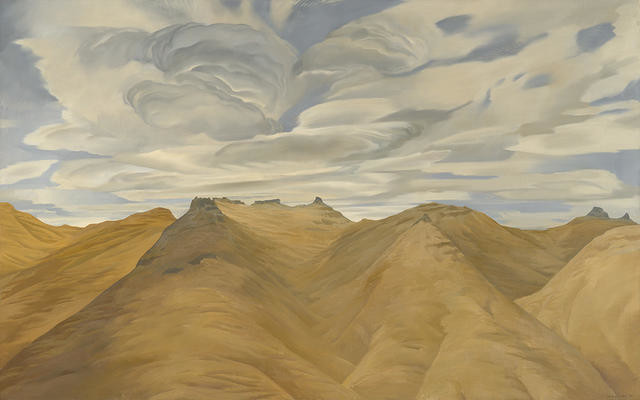
Bill Sutton Te Tihi o Kahukura and Sky, I
This painting by Bill Sutton expands our view of a familiar site on Christchurch’s Port Hills, encouraging the viewer to consider what mysteries may have been present before the arrival of Māori tangata whenua, the people of the land. Te Tihi o Kahukura, or the Citadel of Kahukura, is the first name of Castle Rock, the foregrounded point at the left of the painting. The extended Māori name translates as ‘the Citadel of the Rainbow God (and a) sky full of boiling clouds roaring around all over the place’. According to Kāi Tahu tradition, Kahukura is the atua, or god, who clothed the land; Kahukura later transformed to become the atua of rainbows. Here, Sutton’s interest in landscape, light and colour is applied to a location of significance for Māori. There is an intimacy in the site for Sutton, as he was able to see it “from my upstairs back-landing window”. Sutton’s house remains in what is now known as ‘the red zone’, an earthquake-battered place of an undetermined future.
(Te Tihi o Kahukura: The Citadel of Kahukura, 18 Februay 2017 - 18 May 2018)
Collection
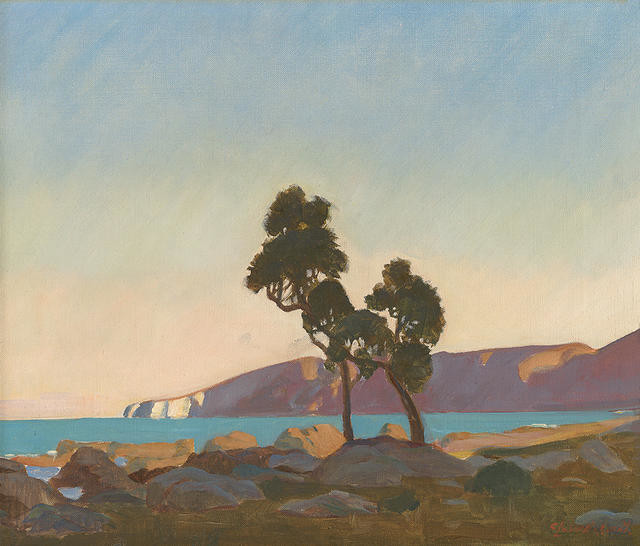
Colin S. Lovell-Smith Evening
With the arrival of the motorcar, Otama-a-kura / Goose Bay (south of Kaikōura) became a popular camping spot for summer visitors. Christchurch-born couple Colin and Rata Lovell-Smith stayed there regularly throughout the 1930s, joining the throng heading north each season to camp, fish and relax – and, for these two, to paint. The results of Colin’s labours include this pared back evening coastal scene at Haumuri Point; and a painterly record of civil engineering works disturbing the usually tranquil Otumatu (near Goose Bay) during the completion of the Main Trunk Line in 1939.
Collection
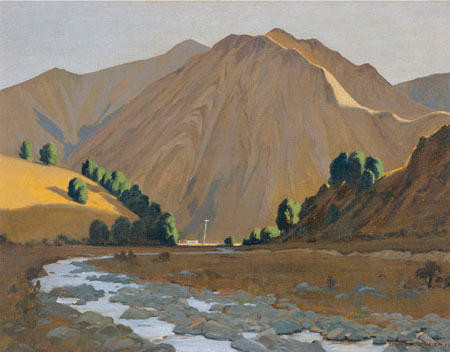
Colin S. Lovell-Smith Sunset, Craigieburn
Colin Lovell-Smith often went on painting trips to this area with his wife Rata, who was also a landscape painter. Craigieburn is in the Southern Alps, about 100 kilometres northwest of Christchurch. Although set beside a small riverbed close to the main road, the painting focuses on the steep eroded slopes of the Craigieburn Range. Lovell-Smith has paid close attention to the landform details, capturing the distinctive qualities of the Canterbury mountain region. Shades of ochre are subtly orchestrated with the soft grey of the predominant greywacke rocks. Born in Christchurch, Lovell-Smith studied at the Canterbury College School of Art then worked for his father’s printing business. During World War I Lovell-Smith was with the Royal Engineers on the Balkan Front and was subsequently awarded the Serbian Gold Medal of Merit for his work. On his return to Christchurch in 1919 he taught, first at St Andrew’s College, then at the School of Art, of which he was Director from 1947 until his death.
Collection
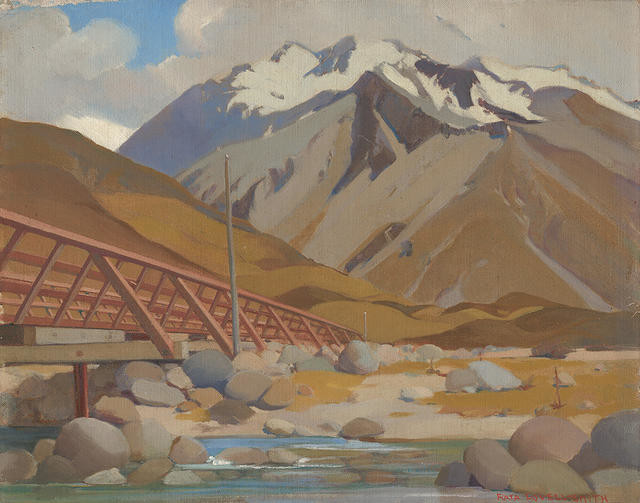
Rata Lovell-Smith Bridge, Mt Cook Road
'This is the Mount Cook Road, and there are many bridges on that road. The people of Ngāi Tūāhuriri would go inland into the McKenzie [just below where this location is painted] for hunting high country weka [native woodhen] with dogs. They'd carry their empty packs of pōhā [kelp bags to hold preserved birds] with them to the hunting area, catch the weka and process the birds up there. They’d carry the pōhā out, and meet people coming from the south also going up to those high country plains. It was a summer exercise. Towards the end of summer the birds are fat. You preserve them like tītī [muttonbirds] in their own fat.' —Sir Tipene O’Regan
(He Rau Maharataka Whenua: A Memory of Land, 17 September 2016 – 18 February 2017)
Collection
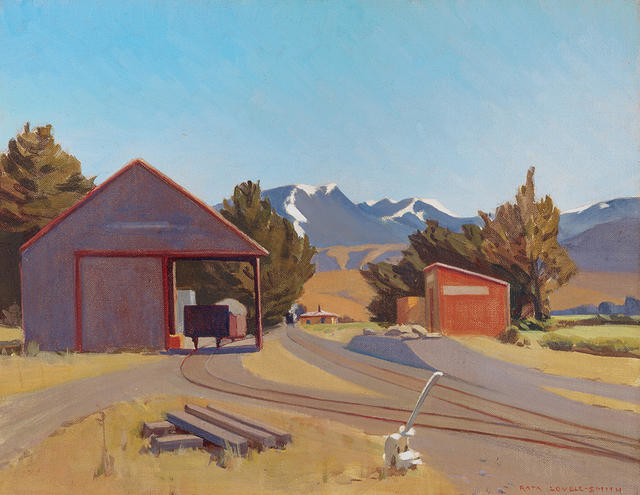
Rata Lovell-Smith Hawkins
The painting shows the railway station at Hawkins, a small farming settlement near Darfield. Rural stations like this were once a common feature on branch lines across the Canterbury Plains. Rata Lovell-Smith chose to paint outside, rather than in the studio, often seeking out isolated rural views. Her works vividly capture the region’s distinctive colours and bright, clear light, and her crisp style is especially well-suited to landscapes with strong structural elements. Here, she deftly conveys a scene full of lines, curves and angles while preserving a sense of the spaciousness of the mountains beyond and the open sky above.
(Perilous: Unheard Stories from the Collection, 6 August 2022- )
Collection
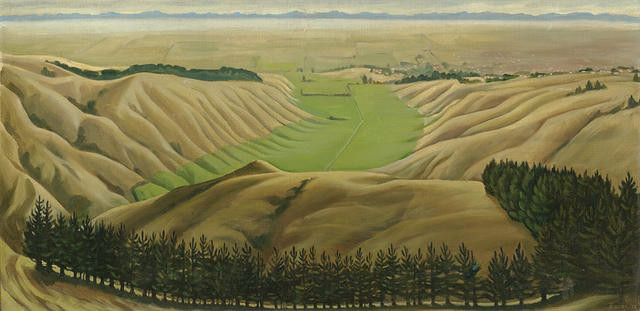
Doris Lusk Canterbury Plains From Cashmere Hills
Doris Lusk’s landscapes often take in an elevated view, placing her at the head of a valley, looking down with hawk eyes across a complex, spreading scene. The whole is surveyed, absorbed and brought together through structural reconfiguration, simplification and reframing, often beneath a distant horizon. Contrasting juxtaposed elements here – dry foothills and green valley, or foreground pines and distant morning haze – are combined to become a generous, contemplative whole. Lusk was part of a circle of artists including Colin McCahon, Rita Angus and Leo Bensemann, and is recognised for having made a distinctive, deeply personal contribution to New Zealand painting.
(As Time Unfolds, 5 December 2020 – 7 March 2021)
Collection
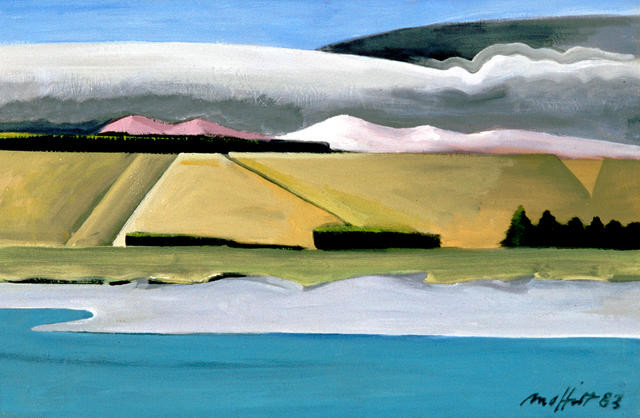
Trevor Moffitt Rakaia Series No. 37
Trevor Moffitt had a deep love for inland Canterbury that was in part fostered by his obsession with fishing. In the mid 1970s he purchased a bach at Lake Clearwater, inland from the Canterbury town of Ashburton. This became his favourite spot to retreat from city life and experience the outdoors. In 1982, after the death of his wife, Alison, Moffitt began the series that this work is from. He said in an interview:
'After Alison died I’d had enough of people, so I went out and painted the Rakaia River series. I had just been emotionally drained. […] The best thing I could do was go off on the weekend and paint the river. I poured all my grief and tears into depicting the waters of the Rakaia.'
In the vast emptiness, 8 January - 21 August 2016
Collection
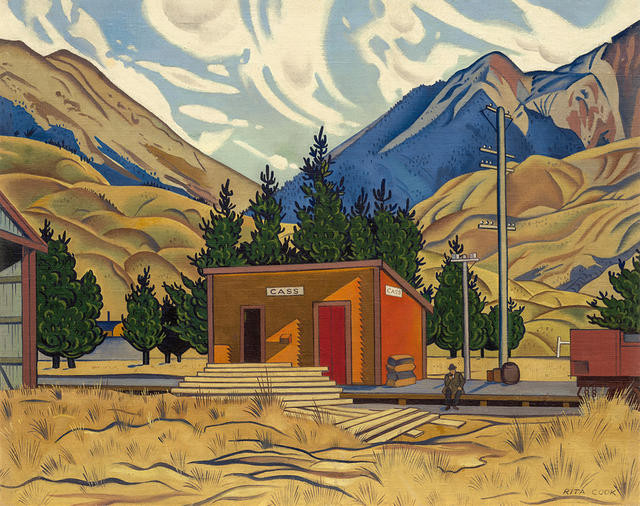
Rita Angus Cass
This work by Rita Angus has come to symbolise the hard-edged clarity of the Canterbury school of landscape painting. It was made following the artist’s ten-day visit to the remote high country railway settlement of Cass in 1936 with painters Louise Henderson and Julia Scarvell. The Canterbury style was also associated with an atmosphere of isolation and emptiness, often emphasised through small signs of human occupation and intervention placed within a much larger natural environment. While these aspects play an important role in Cass, the work also benefits from a sense of expectation, as we wait, with that solitary, overcoat-clad figure, for the train to arrive.
(Absence, May 2023)
Collection
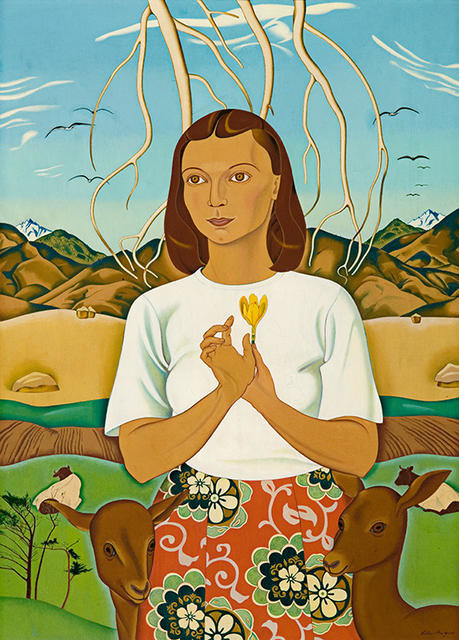
Rita Angus A Goddess of Mercy
Ōtautahi-trained painter Rita Angus is known for her distinctive graphic style, clear light and bold colours. A Goddess of Mercy is the first of three goddess works she painted. Informed by her feminist worldview, Rita saw the goddess portraits as the most important examples of her pacifist ideas. This work also has personal significance. Rita’s sister Edna died suddenly in 1940, and the pattern on the subject’s skirt comes from one of Edna’s favourite outfits. Surrounding the figure we see symbolic clues to a relationship with nature: a deer at the figure’s side, willow branches forming a halo around her head and the crocus flower clasped in her hand, a hopeful sign for the coming of spring.
(Perilous: Unheard Stories from the Collection, 6 August 2022- )
Collection
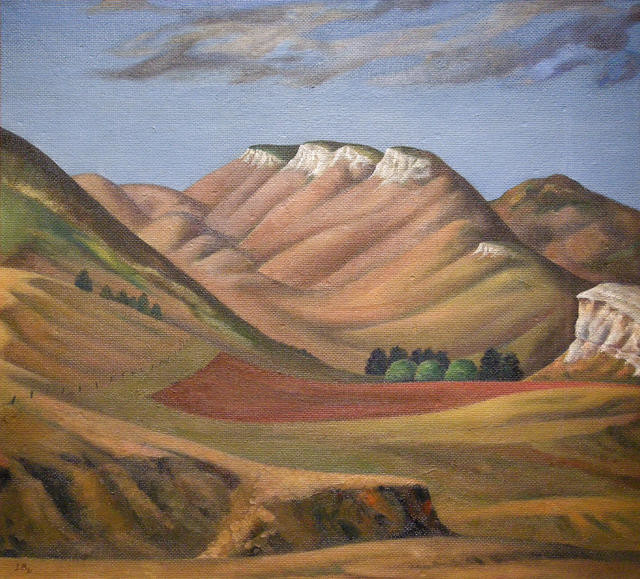
Leo Bensemann Canterbury Spring
In 1930s New Zealand there was wide discussion about what was unique about the New Zealand situation; what it was that made us different from the rest of the world. Artists and writers began exploring ways to identify our national identity. A number of artists began painting the Canterbury High Country, most famously Rita Angus and her landscape painting of the railway station at Cass. One reviewer in 1936 observed that there was a new quality in the landscapes exhibited in Christchurch that seemed ‘to consist in a removal of the romantic mists which used to obscure mountains and the Canterbury countryside generally. The light now is clear and hard, the colours are in flat planes, and the effect is of seeing the country through a gem-like atmosphere. There is also a new romantic standpoint – an insistence on the isolation and brooding loneliness of the hills.’ It’s a statement that certainly rings true with the Canterbury paintings of Rita Angus, Leo Bensemann, Louise Henderson, Rata Lovell-Smith and Bill Sutton.
(March 2018)
Collection
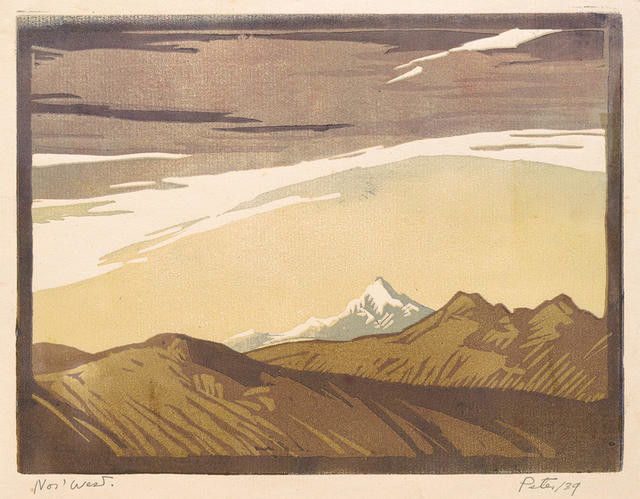
Juliet Peter Nor’west
According to Kāi Tahu, within the story of the creation of Te Waipounamu (the South Island), Aoraki was an atua, or demi-god, who left the home of his father, Raki, in the heavens and voyaged with his brothers to visit Raki’s first wife Poharora o Te Po. They set out to return to his father, but there was a fault in the karakia (prayer) for their return. Aoraki’s canoe – Te Waka o Aoraki – was stranded, and Aoraki and his brothers turned to stone, becoming the mountains of Kā Tiritiri o Te Moana, the Southern Alps.
'This work is interesting because it offers an unusual perspective on Aoraki [Mount Cook] – but Aoraki is full of different perspectives in Kāi Tahu culture. The mountain is, above all, a symbol of our tribal and regional identity. That’s got nothing much to do with its location – although that obviously commands cultural attention – but mainly because of its centrality in the Te Waipounamu creation story. And it is a distinctive creation story, part of a creation myth which has survived here in the remote outskirts of Polynesia while it has been lost at the centre where it came from. Aoraki made us distinctive, and it makes all people distinctive that live under its span. Juliet Peter’s depiction of it is unusual, but every way you look at Aoraki you’ve got a different perspective.' —Sir Tipene O’Regan
(He Rau Maharataka Whenua: A Memory of Land, 17 September 2016 – 18 February 2017)
Collection

Rita Angus Mountains, Cass
“I was glad to see this painting again for a few minutes. […] I was ‘knocked out’ by the clear admission of truth. I am amazed that at one time (years ago), and in about three to four hours, I had the power & courage to paint Cass.”
—Rita Angus
